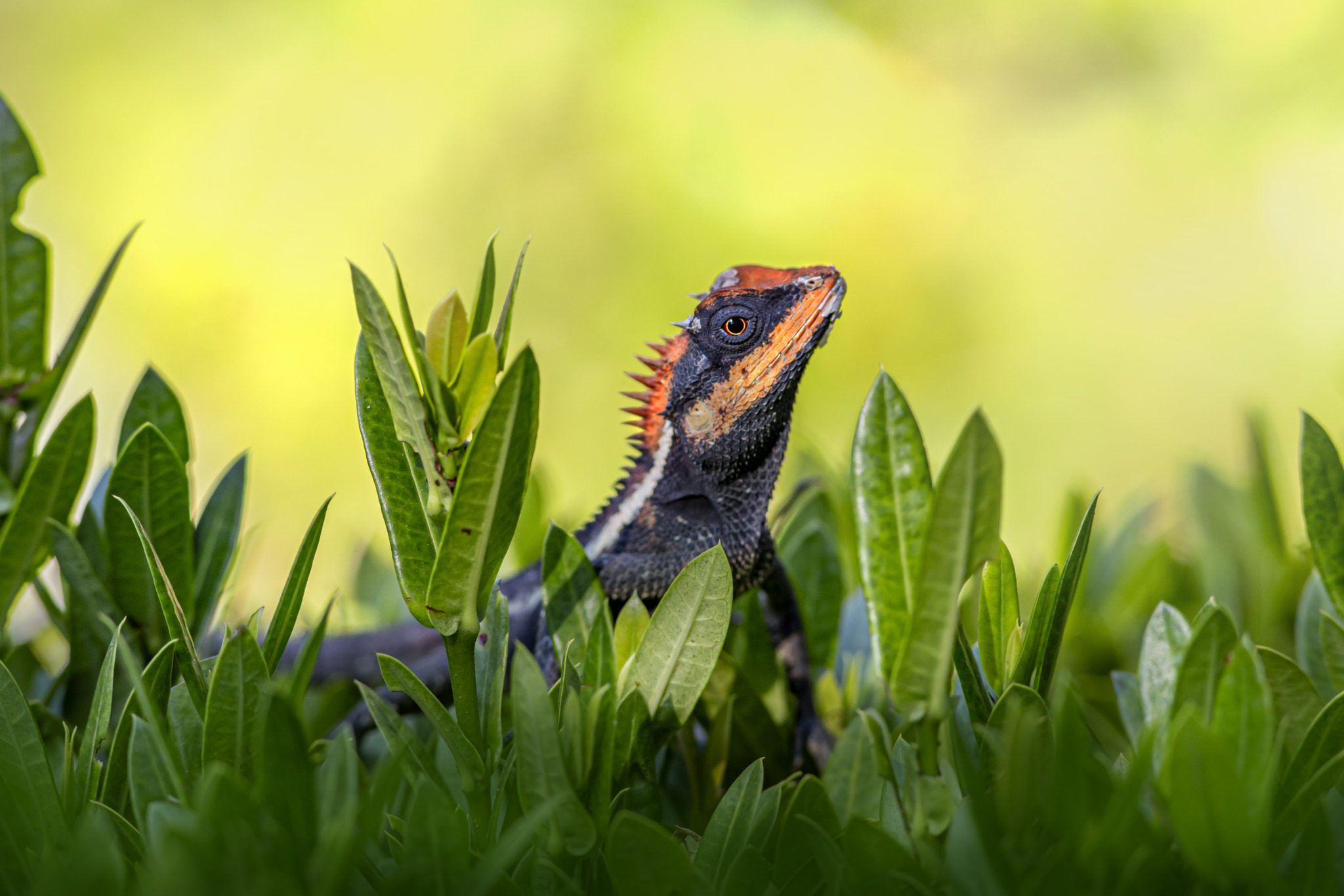EMMA GRAY’S FOREST LIZARD (Calotes emma) – THE STEALTHY, TREE-CLIMBING REPTILE! 🦎🌿
Let me tell you, folks—Emma Gray’s Forest Lizard (Calotes emma) is one of the most underrated, most adaptable lizards out there. It’s got stealth, agility, and a fantastic ability to blend in. Some lizards just sit there—NOT THIS ONE! This one is a climber, a survivor, a total jungle pro!
GENERAL INFO – VERY IMPORTANT!
- Scientific Name: Calotes emma – Classic, elegant, strong name.
- Common Name: Emma Gray’s Forest Lizard – Named after a great naturalist. Big respect!
- Family: Agamidae (Dragon Lizards) – A family full of champions, no question!
- Size: Up to 35 cm (14 inches) including tail – Sleek, streamlined, built for agility!
- Lifespan: Around 5–10 years – If it avoids predators, it does VERY well!
APPEARANCE – BUILT FOR SURVIVAL, VERY IMPRESSIVE!
- Color:
- Usually olive-green, brown, or grayish – Blends in perfectly with trees.
- Can change shades slightly to match surroundings – Nature’s camouflage expert!
- Body:
- Slim, lightweight, perfect for climbing!
- Head & Spines:
- Males have a more pronounced crest along their neck and back – Very stylish!
- Tail:
- Long, used for balance, like a built-in stabilizer!
- Eyes:
- Keen vision, great for spotting prey and threats.
DISTRIBUTION – VERY SUCCESSFUL, EXPANDING TERRITORY!
- Found in Southeast Asia – Thailand, Myanmar, Laos, Vietnam, Cambodia, China, and parts of India!
- Loves forests, woodlands, and sometimes plantations – Highly adaptable, thriving in multiple environments!
- Often seen on trees, shrubs, and sometimes on the ground – Always alert, always ready!
BEHAVIOR – SMART, FAST, AND STRATEGIC!
- Arboreal but also seen on the ground – Very versatile, very effective!
- Territorial – Males show dominance with head-bobbing displays – Knows how to command respect!
- Can stay still for long periods to avoid detection – Master of patience, master of camouflage!
- When threatened, it sprints up trees or freezes to blend in – Perfect survival strategy!
DIET – PURELY PREDATORY, PURELY SUCCESSFUL!
- Insects like crickets, grasshoppers, and beetles – Top-quality protein, folks!
- Occasionally small vertebrates like geckos or frogs – Expands its menu when needed!
- Uses quick tongue strikes to snatch prey – Fast reflexes, total precision!
PREDATORS & THREATS – NOT GOOD, FOLKS!
- Snakes, birds of prey, and larger reptiles – They try, but this lizard is FAST!
- Deforestation – BIG PROBLEM! Habitat loss is a serious issue.
- Pet trade – Some are captured, but they belong in the wild!
CONSERVATION STATUS – STILL WINNING, BUT NEEDS SUPPORT!
- IUCN Status: Least Concern – Still doing well, but let’s keep it that way!
- Protected in some areas, but habitat destruction is a concern.
FINAL THOUGHTS – A TRUE SURVIVOR, A NATURAL WARRIOR!
The Emma Gray’s Forest Lizard is fast, intelligent, and perfectly designed for forest life. It’s got stealth, adaptability, and excellent survival instincts.
🦎🔥
Visited 322 times, 3 visit(s) today
Views: 800
Subscribe to the newsletter:
